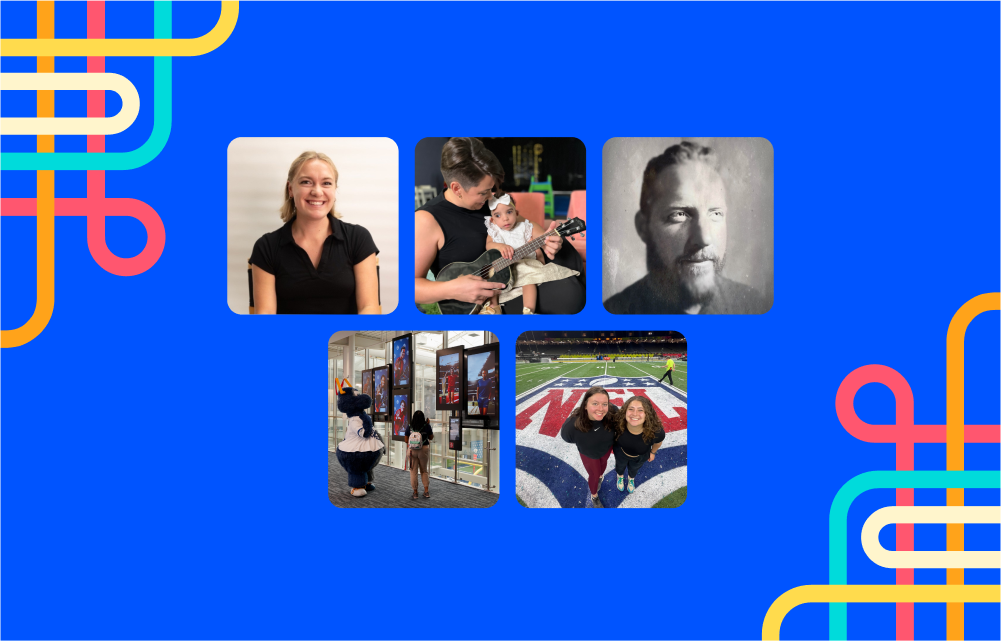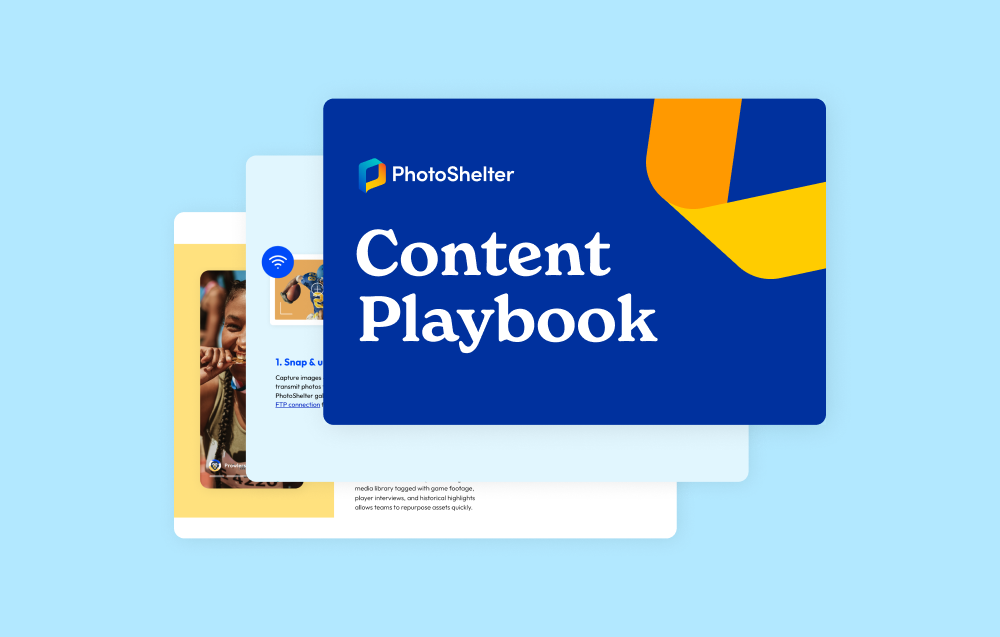Share
The Creative Workflow Driving The Buffalo Bills Brand Forward
If you live in Western New York, you’ve definitely heard of the Pegula family.If you’re a sports fan, you might be a fan of The Buffalo Bills, ...
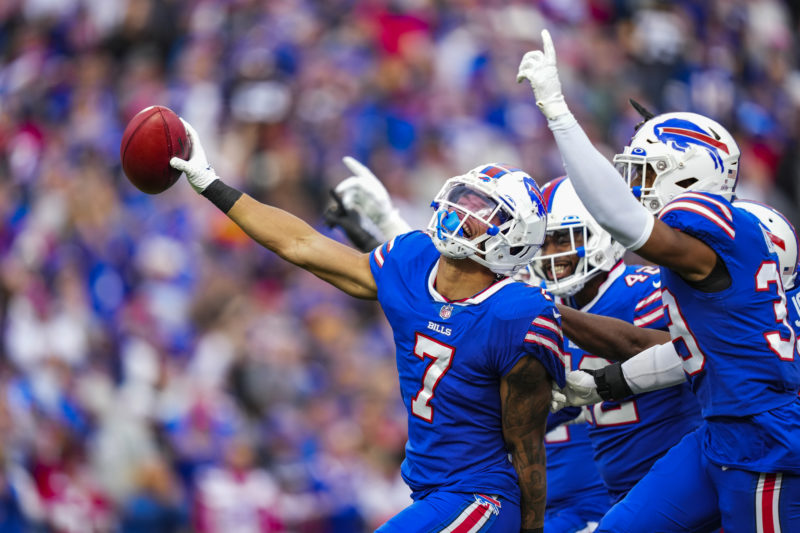
If you live in Western New York, you’ve definitely heard of the Pegula family.If you’re a sports fan, you might be a fan of The Buffalo Bills, The Buffalo Sabres, or The Buffalo Bandits.
If you’re a business person, you’ve probably heard of Kim Pegula—the first woman to become president of an NHL, The Buffalo Sabres, and an NFL team, The Buffalo Bills.
In 2014, Kim Pegula and her billionaire husband, Terry Pegula bought and became owners of The Buffalo Sabres and Bandits. Later that year, they went head to head with Donald Trump and other wealthy adversaries and ultimately won ownership of the Buffalo Bills too. Shortly thereafter, the Pegula Sports and Entertainment (PSE) brand was born—a consortium and collective of five Western New York sports brands, three venues, and a record label.
When the new PSE brand launched, Kim Pegula helped coin the term ‘One Buffalo’ which became a Buffalo Bills campaign uniting fans and the regional community.
Fittingly, the term is now the name for the full-service app for Western New York sports fans. Fans can use the My One Buffalo app to purchase tickets, and merchandise and get updates on the team, players, games, and rankings.
This is all very impressive, but do you want to know who the real MVP of Pegula Sports and Entertainment is?
Ben Green, PSE’s triple-threat Brand Photographer for The Buffalo Bills, Sabres, and Bandits.
In our December 2022 Creative Strategy Behind webinar, Ben walked us through his plan for building PSE’s first functional media archive, what their game day content workflow looks like, and how he efficiently optimized the way the entire organization stores, shares, and uses visual media—saving the media team 20-25 hours per week!
The Challenge: Finding a Data Storage Solution for Pegula Sports and Entertainment
When we initially spoke to Ben in May of 2022, PSE wasn’t ready to make the investment in a digital asset management (DAM) platform, so Ben had to build a case for it.
He framed the problems his team had with Google Drive explicitly:
“How do you identify an archive that’s not working? For me, when I came in here I had four years of experience using PhotoShelter…it is one of my absolute favorite programs that I have ever used in my life and so I was a little surprised to see we were on Google Drive…On our Google Drive, we had 91 parent folders…and we had thousands and thousands of folders. We had 155 users across all of our organizations and we had over 17 terabytes of data.”
Ben Green, PSE Photographer
After six months of using “talking to coworkers and experiencing the difficulties” of using Google Drive himself, Ben identified the storage, collaboration, and organization issues that Pegula Sports and Entertainment were having in an official audit.
The eight issues Pegula Sports and Entertainment had using Google Drive for image and data management:
- Searchability of photos: Google Drive files have very little metadata associated with them, so searching and finding images for time-sensitive content marketing moments was nearly impossible. During this audit, he found the team’s graphic designers spent two to three hours searching for photos each day, and that no photos had captions before 2017.
- Access and upload permissions: “155 users that were on Google Drive all of whom had the ability to upload photos; so I’m talking about that random community event that we couldn’t send a photographer to because we didn’t need photos of it, and now we have 200 blurry, out-of-photos cellphone photos that have been uploaded to our Google Drive and no one knows where they are because they’re not under a proper digital asset management file and folder structure,” Ben said.
- Thumbnail sizes: All asset thumbnails look the same in Google Drive and it doesn’t sort through them by actual file size. This disallows the PSE team from seeing the proper size of an asset leading to user frustration and lack of use.
- Slow download speeds: Downloading content from Google Drive took forever.
- Lack of integrations: Google Drive lacked the platform integrations PSE needed to ease interdepartmental collaboration. No upload or sharing integration to drive a live workflow.
- Crashing App: The Google Drive cellphone app crashed constantly
- Difficult for collaboration: “[Google Images] It’s the one part of Google Drive that’s not user-friendly and easy for corporate collaboration,” Ben said.”
- High cost per user: “For a large organization like ourselves, we need to be paying per terabyte not per user,” Ben said.
These issues lead to four major problems Ben said: Brand inconsistencies, inefficient use of funds, a drop in the percentage of photos used, and little to no requests for photos from other teams.
The Game Plan: Build A Case to Invest in DAM
From May to August of 2022, Ben researched the wide world of digital asset management tools, and by September 2022, they had an archive of nearly one million assets in a PhotoShelter for Brands DAM Library.
“In a corporate world, people don’t speak creative. We can’t just paint pretty colors and say hey something’s wrong here, and we need to speak the language. So, how do we speak the language? The way that we speak the language is we identify these problems by talking with our coworkers and we get empirical data for it. When I was talking about thumbnail sizes, as you can see here [pictured below,] I like to take a lot of horizontal photos, not many vertical ones, but you can’t tell the difference in all this. So, people are spending a lot of time and money—time, as in, money, going through and searching for photos, they’re opening up every single image to find what they need…Our graphic designers, our social media managers, our marketing team, and especially our photographers are wasting a lot of time just trying to find photos.”
Ben Green
Here’s how he framed the problems PSE was having with Google Drive into challenges PhotoShelter could solve:
- Who was impacted? He interviewed 25 people across the nine PSE organizations—from creative directors, graphic designers, and videographers to social media managers and PR executives.
- How was their workflow impacted? He asked how they searched for photos, what they needed them for–even detailed questions like what resolution of image they most often downloaded.
- How much time was being wasted per day that could be saved by using a DAM with stronger automation abilities, a more logical folder structure, and integration enablement?
Using the empirical data he collected from the internal interviews, he calculated the return on investment PSE would gain if they moved from Google Drive to PhotoShelter for Brands. He showcased the following finding to the former Vice President of Marketing and one month later, Ben was building and transitioning thousands of PSE assets to a PhotoShelter for Brands account.
He estimated that out of 40% of the 25 folks he interviewed (10 people) were spending 2 hours per day searching for photos. By additionally calculating what the company was paying each person to research images per day, he found they were spending a minimum of $120,000 per year on labor–literally just people searching for photos.”
The Solution: Use PhotoShelter for Brands to Manage Visual Storytelling
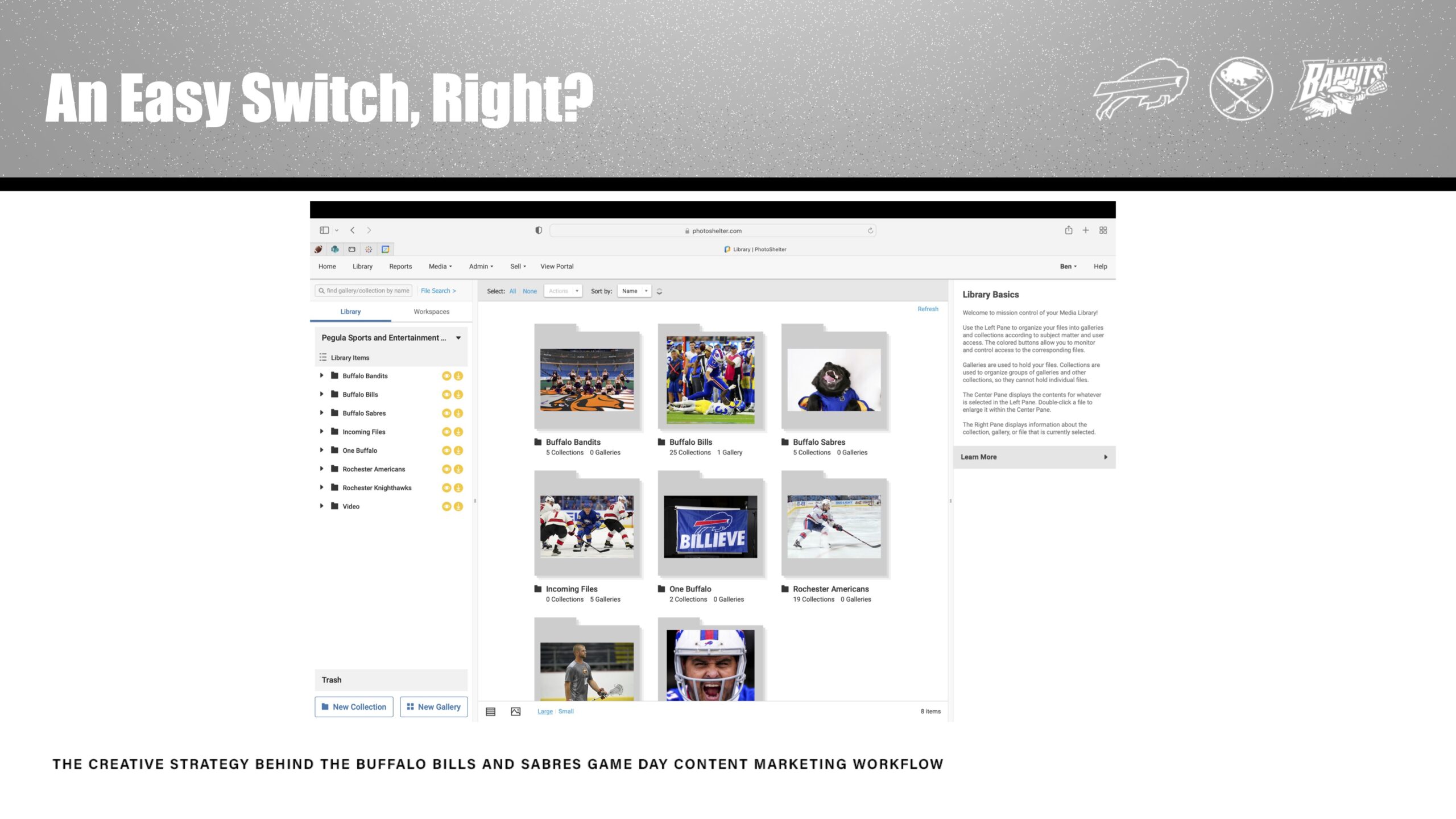
Building the Archive
Once Ben won buy-in for switching to PhotoShelter for Brands, Ben managed the DAM archive building and transitioning process over the course of a few months. With the help of his IT team and a serious setup of home and office computer servers, he was able to transfer millions of photos by FTP, while also continuing to do his day job.
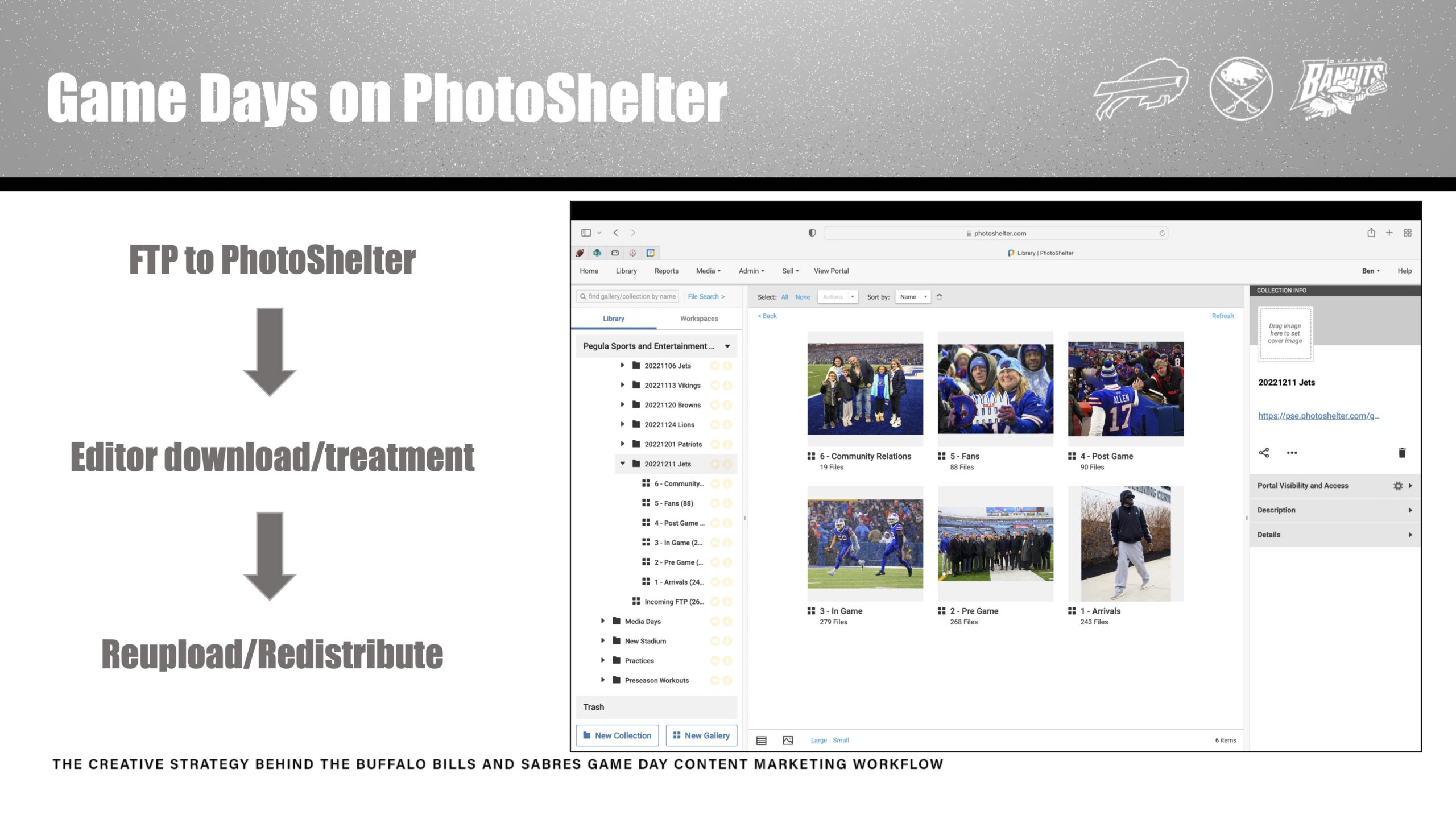
Managing Game Day Content
A few things about the media team’s gameday content-sharing workflow have stayed the same, but the time saved by transferring photos via FTP to PhotoShelter makes the biggest impact.
“While we still run cards, our main mode of photo transportation is FTPing to PhotoShelter and this has actually saved us 15+ minutes from card running. Again, when we’re talking about saving our graphic designers, social media managers time–if they’re spending less than two hours searching for photos, they’re able to spend that time building more graphics, posting more on social.”
Each game gets its own Collection and the content the media team uploads is then organized into six Galleries: arrivals, pregame, in-game, post-game, fans, and community relations. Each gameday Collection also has an Incoming FTP Gallery in it so editors and graphic designers can edit the raw files uploaded in real-time by photographers and videographers and then move them to the correct Gallery once they’re approved for use.
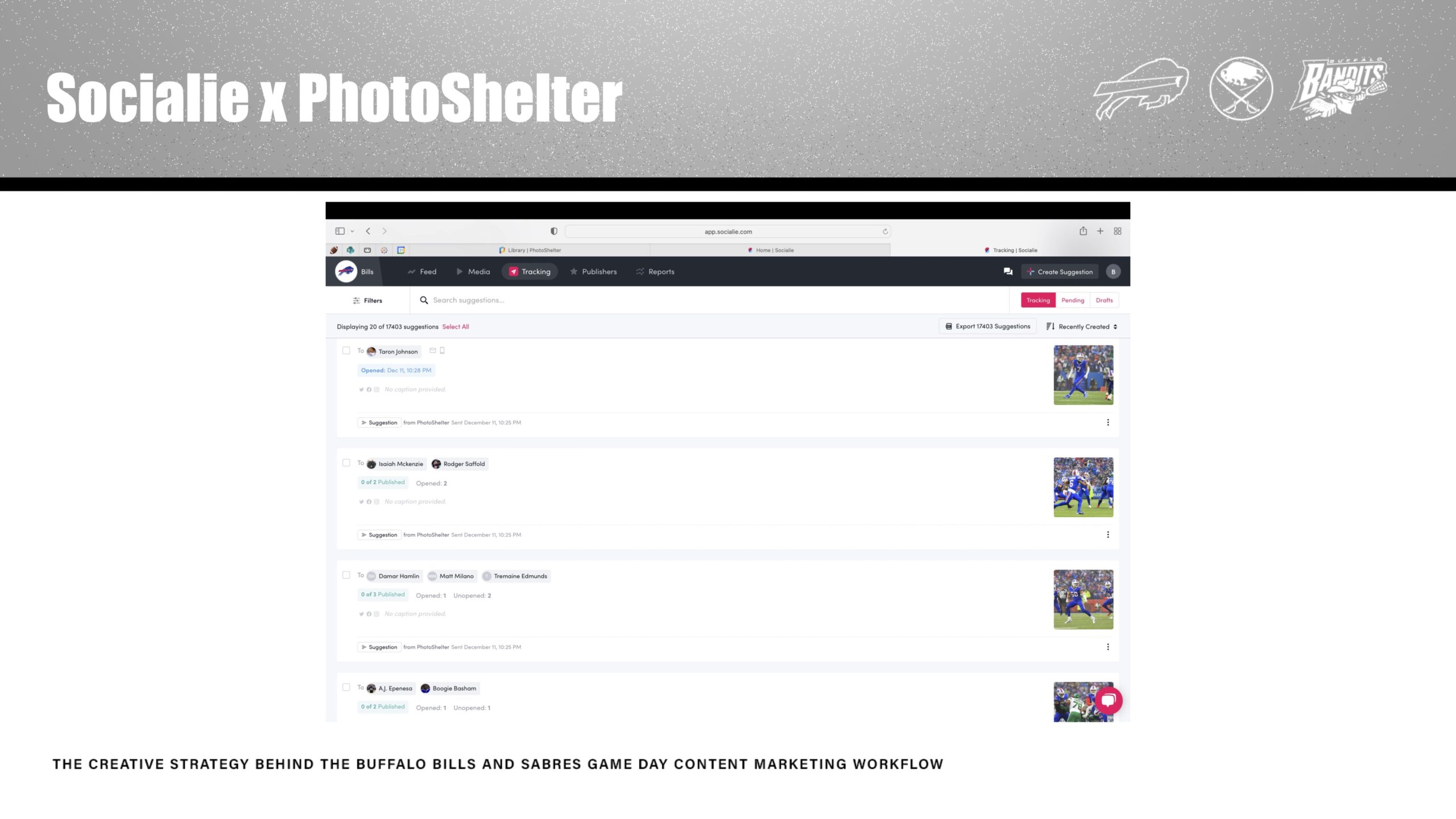
Sharing Content in Real Time
The Buffalo Bills have RosterID enabled on their PhotoShelter for Brands account, which allows Ben and his teammates to find and share player-related content instantly. Plus, they also have our Socialie Integration enabled which allows them to share content with their players in less than 60 seconds after it’s taken.
Ben said, “This has saved us 10 hours per week of sending players photos and we’re working to integrate with our Sabres and Bandits teams. The moment a photo is uploaded, it’s automatically tagged with the player’s name, and it gets sent to that player’s phone…During training camp, I was spending 8 hours a day sending photos to players and that’s a lot of labor costs. It got infinitely easier once we started using PhotoShelter.”
Watch The Webinar On Demand
If you watch football or hockey throughout the year, you’ll love this backstage access from Ben Green—a real team player, and the PSE media team’s MVP!
Watch the full webinar below to learn more about the media team’s tech toolbox, peak into Ben’s gear bag, and hear how a powerful championship mindset drives the Buffalo Bill’s intentional visual storytelling strategy:
Meet the Speaker
Ben Green is a third-generation photographer originally from San Jose, California. After finishing a BA in History at the University of Oregon, Ben began a slow migration from California to Kansas City, and ultimately to the frozen tundra of Buffalo, New York where he currently works as a team photographer for the Bills, Bandits, and Sabres. He has a special interest in artful storytelling in sports and DAM workflow solutions. In his spare time, Ben travels with his partner, Emily, and their 7-year-old husky mix, Keba. Ben also enjoys cooking, cycling, hiking, and kayaking.
Check out the third tip in ‘12 Tips for Creating a Purposeful Career, Creative Strategy, and Marketing Workflow in 2023‘ to learn more about how Ben’s philosophy and approach to creative work have influenced his professional choices.
Professional Sports Fans: Tap In!
Sign up for our newsletter or follow us on Twitter so you don’t miss exclusive, behind-the-scenes stories from the creative brand MVPs that manage the professional sports teams and leagues you love.

